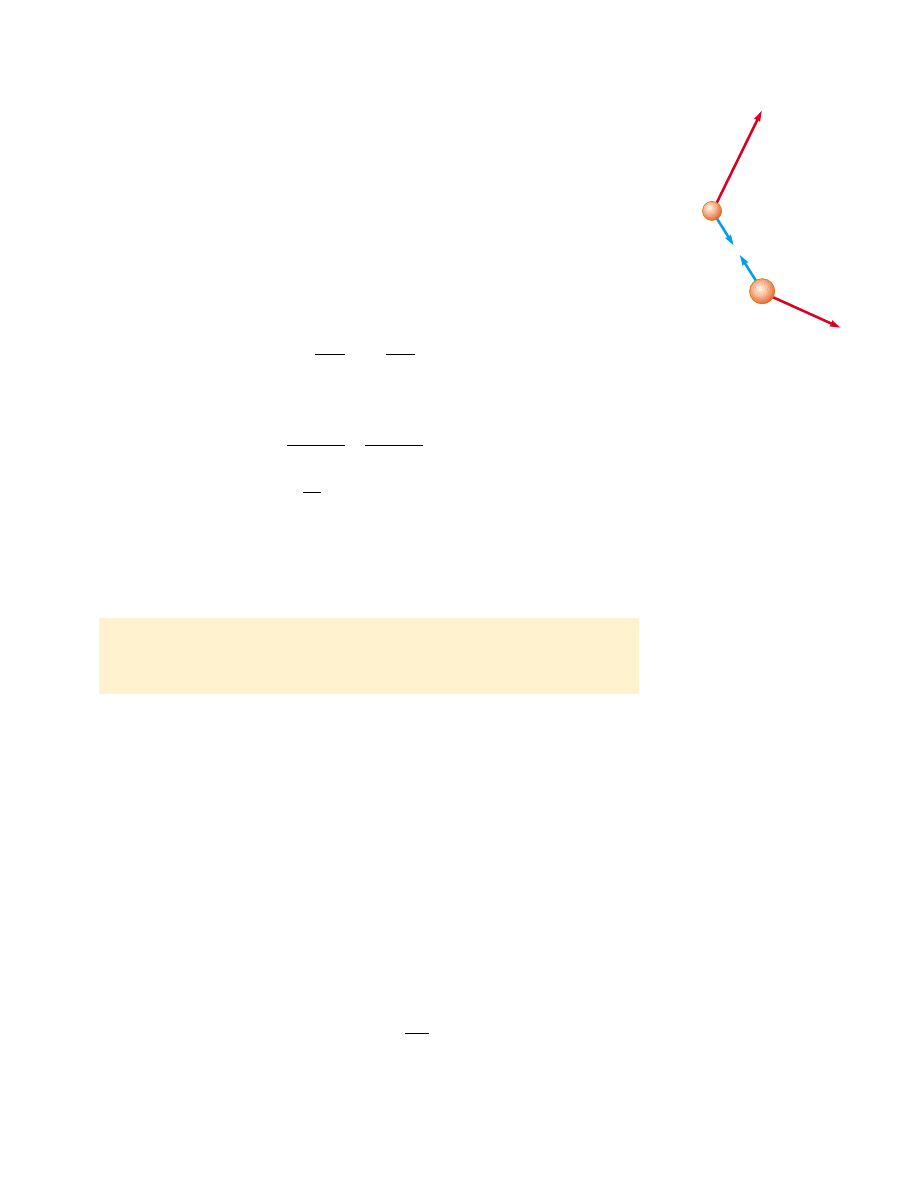Physics For Scientists And Engineers 6E - part 64

one particle is that from the other particle and we can categorize this as a situation in
which Newton’s laws will be useful. If a force from particle 1 (for example, a gravitational
force) acts on particle 2, then there must be a second force—equal in magnitude but op-
posite in direction—that particle 2 exerts on particle 1. That is, they form a Newton’s
third law action–reaction pair, so that
F
12
! "
F
21
. We can express this condition as
Let us further analyze this situation by incorporating Newton’s second law. Over
some time interval, the interacting particles in the system will accelerate. Thus, replac-
ing each force with m
a gives
Now we replace the acceleration with its definition from Equation 4.5:
If the masses m
1
and m
2
are constant, we can bring them into the derivatives, which
gives
(9.1)
To finalize this discussion, note that the derivative of the sum m
1
v
1
#
m
2
v
2
with respect
to time is zero. Consequently, this sum must be constant. We learn from this discussion
that the quantity m
v for a particle is important, in that the sum of these quantities for
an isolated system is conserved. We call this quantity linear momentum:
d
dt
(m
1
v
1
#
m
2
v
2
) ! 0
d(m
1
v
1
)
dt
#
d(m
2
v
2
)
dt
!
0
m
1
d
v
1
dt
#
m
2
d
v
2
dt
!
0
m
1
a
1
#
m
2
a
2
!
0
F
21
#
F
12
!
0
S E C T I O N 9 . 1 • Linear Momentum and Its Conservation
253
v
2
m
2
m
1
F
21
F
12
v
1
Figure 9.1 Two particles interact
with each other. According to
Newton’s third law, we must have
F
12
! "
F
21
.
The
linear momentum of a particle or an object that can be modeled as a particle of
mass m moving with a velocity
v is defined to be the product of the mass and velocity:
(9.2)
p ! m v
Linear momentum is a vector quantity because it equals the product of a scalar quan-
tity m and a vector quantity
v. Its direction is along v, it has dimensions ML/T, and its
SI unit is kg · m/s.
If a particle is moving in an arbitrary direction,
p must have three components, and
Equation 9.2 is equivalent to the component equations
As you can see from its definition, the concept of momentum
1
provides a quantitative
distinction between heavy and light particles moving at the same velocity. For example,
the momentum of a bowling ball moving at 10 m/s is much greater than that of a ten-
nis ball moving at the same speed. Newton called the product m
v quantity of motion;
this is perhaps a more graphic description than our present-day word momentum, which
comes from the Latin word for movement.
Using Newton’s second law of motion, we can relate the linear momentum of a par-
ticle to the resultant force acting on the particle. We start with Newton’s second law
and substitute the definition of acceleration:
"
F ! ma ! m
d
v
dt
p
x
!
mv
x
p
y
!
mv
y
p
z
!
mv
z
1
In this chapter, the terms momentum and linear momentum have the same meaning. Later, in Chapter 11,
we shall use the term angular momentum when dealing with rotational motion.
Definition of linear
momentum of a particle